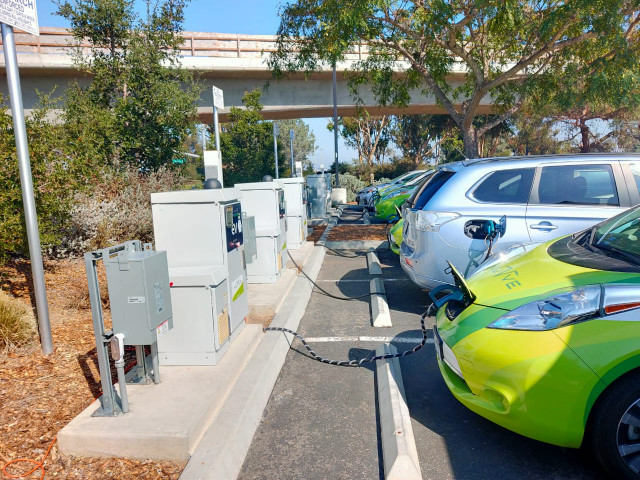E-mobility in EU: 14,000 public EV charging points installation needed every week
According to new cross-industry research based on analysis by McKinsey, up to 6.8 million public EV charging points would be required across the European Union by 2030 to reach the proposed 55 percent CO2 reduction for passenger cars.
This means that up to 14,000 public charging points for all vehicle segments would need to be installed EU-wide every week, compared to under 2,000 installations per week currently. This figure is almost twice that put forward by the European Commission in its Alternative Fuels Infrastructure Regulation (AFIR) proposal, which is now under negotiation in the European Parliament and Council.
As the European auto industry is already rolling out a wide range of low- and zero-emission vehicles in the market, there are serious concerns about the slow deployment of the infrastructure needed to charge and refuel those vehicles.
The sales of electrically-chargeable cars including full-electric and hybrid plug-in models increased 10-fold over the past five years, reaching 1.7 million units last year (about 18 percent of the total market). The number of public chargers in the region, on the other hand, grew by 2.5 times over the same period.
Against this backdrop, the European Automobile Manufacturers' Association (ACEA) is calling on all EU member states to urgently step-up investments in infrastructure for electrically-chargeable cars, vans, trucks, and buses.
"The transition to zero is a long-term race," stated ACEA President and CEO of BMW Group, Oliver Zipse. "The key challenge now is to convince all member states to pick up the pace in deploying the required infrastructure. We need an ambitious conclusion of the AFIR proposal, both in terms of its timing and the targets it sets for each EU country."
Although sizeable investments will be required at the outset, these represent just a fraction of the total investments into comparable infrastructure projects – and would bring huge environmental benefits.
Indeed, the new research paper also estimates the annual costs for public charging infrastructure at € 8 billion – around 16 percent of investment into 5G and high-speed internet networks.
Further, the locations, space, and power output levels needed for heavy-duty vehicle infrastructure are substantially different from those for passenger cars. According to the research paper, trucks will require 279,000 charging points by 2030, of which 84 percent will be in fleet hubs. The remaining charging points will be predominantly public, fast along-highway (36,000), and public overnight charging points (9,000).





















